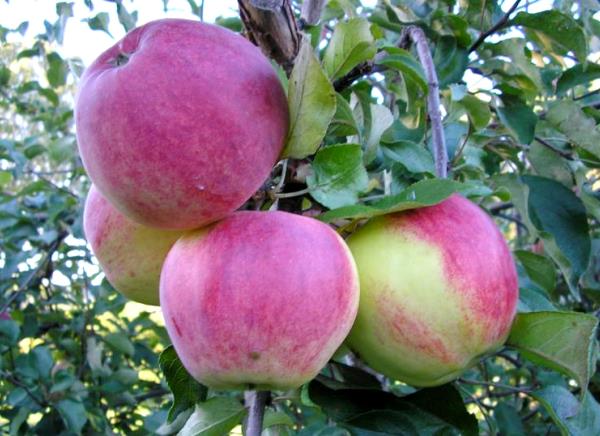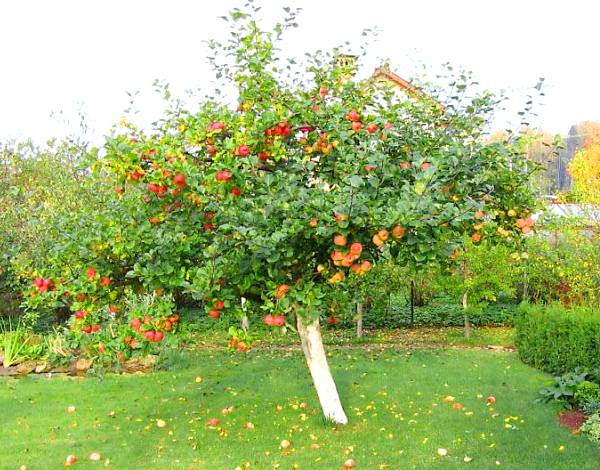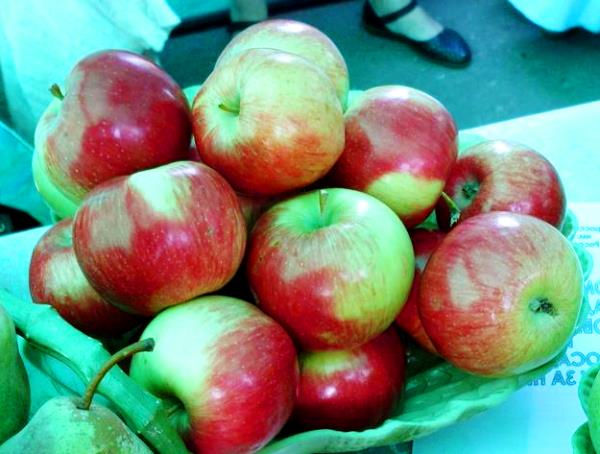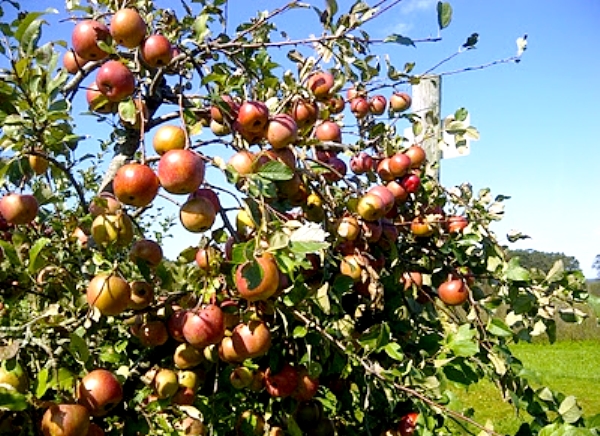The Resilient Wellsey Apple Tree: Benefits Described
Looking through the description of apple varieties, most gardeners pay attention only to the yield of the crop, sometimes to its resistance to diseases. Experienced gardeners recommend taking into account all the characteristics of the plant, but first of all, choose the most suitable variety for you, depending on the purpose for which you are going to grow apples. If you intend to use them immediately fresh, or want to use apples for making jam, then it is better to take early summer varieties, they are best suited for these purposes. According to the description, winter apples are stored much longer, so they can be enjoyed until spring. Now there are a lot of winter varieties of apple trees, and this article will be devoted to one of them - the Welsey apple tree. In addition to a general description of the characteristics of the Welsey apple tree, we will also consider the strengths and weaknesses of this culture.
Description
The Welsey apple variety was released in our area in the second half of the 19th century. This is a product of the work of American breeders, but the seeds of the Siberian cherry apple were used in the cultivation of the Welsey apple tree. First, this variety underwent long-term research in various scientific institutions (in particular, in the Voronezh pomological nursery and the Oryol fruit and berry stronghold), and then it began to spread across the expanses of the future USSR. Now Welsey is grown in Ukraine, Belarus, the European part of Russia and adjacent regions.
Let's go directly to the characteristics of the Welsey apple tree. Let's start by describing the tree. Apple trees are short and medium in size. The crown is at first wide, pyramidal in shape, with the age of the plant it becomes slightly rounded. The branches of the tree are directed upwards, but with drooping ends. Most of the main branches leave the trunk at a very sharp angle, which can sometimes cause unpleasant situations (often they break off due to the enormous weight of the branches). In spring, the buds are large, convex and drooping.
The apple tree belongs to plants with a mixed type of fruiting. Most of the leaves are small, a few of them are medium in size. They are dark green in color with a characteristic sheen. Young shoots are brown, slightly drooping, have branches of medium thickness. Wellsie saplings are characterized by medium vigor, even, one might say, restrained growth. The flowering process is amicable, the flowers are white-pink in color, small and dense. Fruiting Welsey is possible already in the fourth or fifth year, because the variety belongs to the early-growing.
Now let's look at the characteristics of the Welsey apple tree. The apples are small, medium in size and weight (one Welsey apple can weigh from 80 to 150 grams). The fruits are very smooth, flattened, that is, turnip-shaped, less often they are round. The main color is yellow (in the phase of removable maturity), over time they acquire a golden hue. A cover color is also inherent - dark red stripes are noticeable over the main background. The peel of Welsey apples is very thin, dense and smooth, subcutaneous points are clearly visible. The flesh is firm and juicy, white or pale green in color, often with red veins. Wellsea apples do not always taste the same, but in most cases they are sweetish, there is a possibility of a slight acidity in the taste, and a characteristic aroma is also inherent. Apples are not attached very firmly, therefore they are easily torn off.
Wellsea apple fruits are very rich in various nutrients.Approximately 1/10 of the composition of apples is sugar (fructose), approximately the same amount of pectin substances, a fairly high content of ascorbic acid (the more familiar name is vitamin C) - about 10 mg / 100 g. In addition, it should be noted that the chemical composition also includes titratable acids (slightly more than half a percent) and radioactive substances (that is, some metals, macro- and microelements) - up to 200 mg per 100 g of fetus.
The ripening of the Wellsey apple tree is observed mainly in the second half of September in areas with a temperate climate, and later in colder regions. Wellsea apples are eaten fresh, but they are also suitable for making jam or juice.
Advantages and disadvantages
Gardeners often leave good reviews about Welsey apple, but this variety also has drawbacks. Now let's figure it out in more detail. Let's start with the benefits of the Welsey apple tree. First of all, like many other winter varieties, one of the advantages of the variety is the fruits, more precisely, their characteristics. In addition to excellent taste, Wellsea apples are distinguished by good keeping quality, that is, they can be stored for a sufficiently long period, without losing either their attractive appearance or taste (apples can lie in a convenient place without problems until February), and are convenient for transportation. Gardeners are also attracted by the high yield of the apple tree - up to 200 kg per tree (the highest result that has been recorded is 275 kg).
There are not many disadvantages, but they are worth noting. They are associated in most cases with fruits. For example, apples are shrinking with a bountiful harvest, and they are also prone to shedding during ripening. A characteristic disadvantage of the variety is the variability of taste under the influence of various factors (weather, growing region, etc.).
The Welsey apple variety works well for hobby gardeners as it is not very difficult to grow. It is also worth noting that with the help of this variety, several others were bred (the most famous are Prima, Aelita).
Video "Preparing apple trees for wintering"
The video gives advice on preparing summer and winter varieties of apple trees for frost, in particular, it tells about the role of whitewashing trees.




